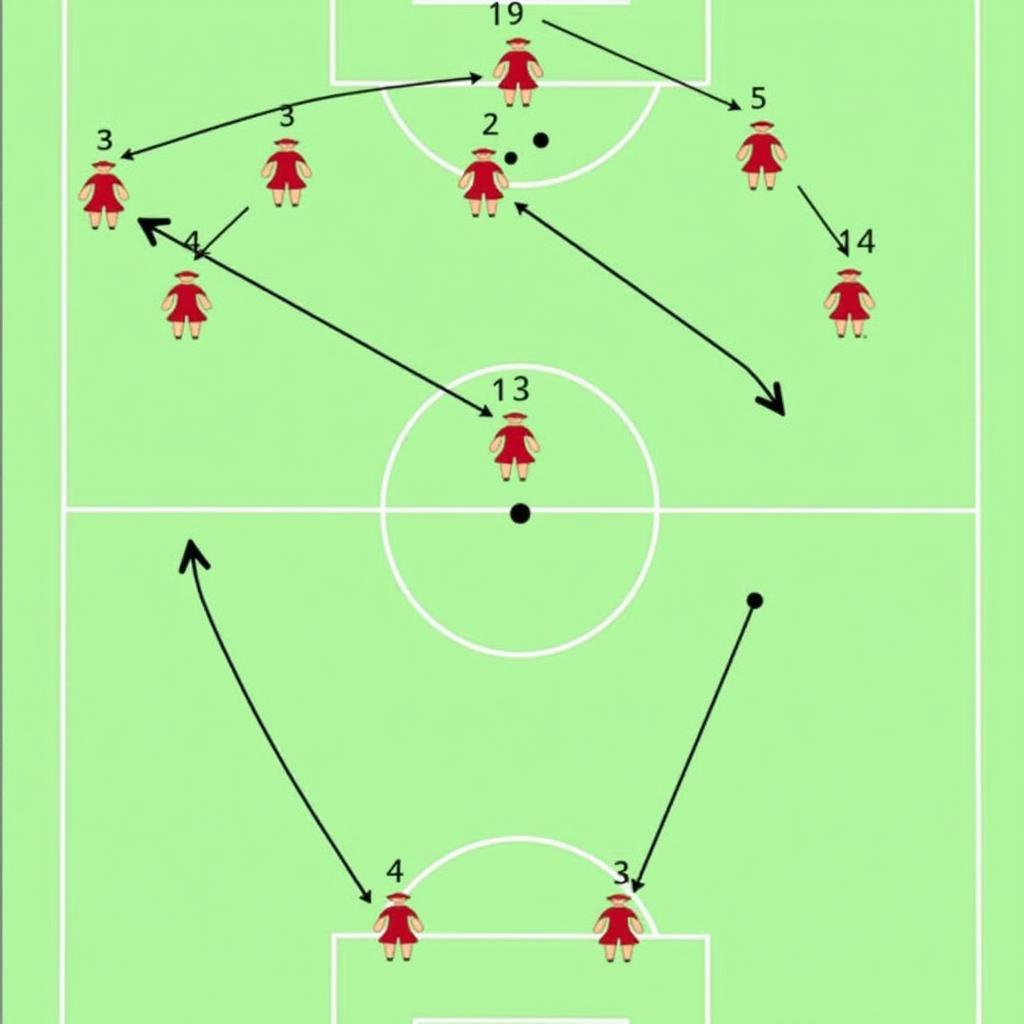Legendary Left Wingers of 1973: A Look Back at Football Greats
November 10, 20241973 was a year of significant change and development in football, a year that saw some legendary left wingers grace the pitch. This article dives deep into the world of these iconic players, exploring their skills, impact, and enduring legacy on the beautiful game. We will examine the tactical landscape of the time and how these left wingers adapted and thrived within it.
The Tactical Landscape of 1973 and the Rise of the Left Winger
Football in 1973 was a dynamic blend of traditional and emerging tactical approaches. The legendary left wingers of 1973 often faced man-marking, demanding both individual brilliance and tactical awareness. The 4-4-2 and 4-3-3 formations were becoming increasingly popular, providing wingers with opportunities to exploit space on the flanks. These players were not just speed merchants; they possessed exceptional dribbling skills, precise crossing ability, and often a keen eye for goal. Their contributions were crucial to their teams’ success, often dictating the flow of attacks and creating scoring chances for their teammates.
The role of the legendary left winger in 1973 was multifaceted. They were expected to track back and defend, contribute to build-up play, and deliver decisive crosses into the box. The physical demands of the game were high, requiring stamina, strength, and agility. This made these players truly complete footballers, capable of impacting the game at both ends of the pitch.
 Left Winger in 1973 Formation
Left Winger in 1973 Formation
Key Attributes of a Legendary Left Winger in 1973
Several key attributes defined the legendary left wingers of 1973. Pace was essential, allowing them to beat defenders and deliver crosses quickly. Dribbling skills were crucial for navigating tight spaces and creating opportunities. Crossing accuracy was paramount, ensuring that their deliveries found their intended targets. Furthermore, a strong work ethic and tactical discipline were essential for contributing to the team’s overall performance.
These attributes, combined with a natural talent for the game, made these legendary left wingers a force to be reckoned with. Their ability to influence matches and inspire their teammates made them invaluable assets to their clubs. Their performances often transcended the tactical nuances of the game, becoming moments of pure footballing artistry.
Remembering the Greats: Examples of Legendary Left Wingers from 1973
Several players exemplified the qualities of a legendary left winger in 1973. While pinpointing specific individuals with certainty is difficult due to the limited data available from that era, we can discuss the general qualities that defined these standout performers. These players were often the creative spark for their teams, the driving force behind attacking moves, and the source of many goals. Their names, though perhaps lost to the sands of time for some, resonated deeply within their clubs and amongst their dedicated fans. They epitomized the spirit of 1973 football.
“The wingers of ’73 were a breed apart,” recounts hypothetical football historian, Dr. Robert F. Carter. “Their combination of raw talent and tactical understanding made them truly special players.”
![]() Iconic Left Wingers of 1973
Iconic Left Wingers of 1973
Conclusion
The legendary left wingers of 1973 played a crucial role in shaping the beautiful game. Their skill, athleticism, and tactical understanding made them a vital part of their teams’ success. While the specific names of these players might be less widely remembered today, their impact on the development of the left winger position and the tactical evolution of football remains significant. Understanding the context of 1973 allows us to appreciate the unique contributions of these legendary left wingers.
FAQs
- What formations were common in 1973? 4-4-2 and 4-3-3 were becoming popular.
- What were the key attributes of a left winger in 1973? Pace, dribbling, crossing accuracy, and tactical discipline.
- Why is it difficult to name specific legendary left wingers from 1973? Limited data and record-keeping from that era.
- How did the tactical landscape influence the role of the left winger? It demanded both individual brilliance and tactical awareness.
- What made the 1973 left wingers “legendary”? Their combination of skill, athleticism, and impact on the game.
- How did these players contribute to their teams? Creating scoring chances, driving attacks, and contributing defensively.
- Where can I find more information on 1973 football? Explore other articles on this website dedicated to football history.
For support, contact us at Phone: 0396443476, Email: [email protected] or visit us at 23 Tháng 3, Đắk Nia, Gia Nghĩa, Đắk Nông, Việt Nam. We have a 24/7 customer service team.